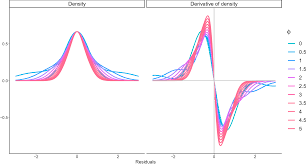It is the nature of things around us to change constantly over time. This time-dependent variation is what makes analysis and prediction over successive intervals crucial for strategic planning. Time series charts provide a powerful yet simple method to study fluctuations and recognize important demand and price movements underlying longitudinal data.
What is a time series chart?
A time series chart, also known as a time series graph or time series plot, displays data points plotted sequentially according to the time they were observed. The horizontal axis denotes equal increments of time – days, weeks, months, or years, while the vertical axis pinpoints values of the variable measured at each instance. Points connected via straight lines generate a distinctive visual representation of peaks and troughs over the period under study.
Key elements of time series charts
Some key elements of all time series charts include:
- Time Interval: Data is plotted at uniform intervals such as daily, weekly, quarterly, etc., depending on the granularity required.
- Data Points: Each point denotes the value of the variable being tracked at a specific date or period.
- Straight Lines: Values are joined linearly to illustrate patterns and cycles visually.
- Vertical Axis: Represents magnitude or level of measured variable – sales, temperature, share prices etc.
- Horizontal Axis: Denotes successive periods the variable is tracked over.
Thus, at its core, a time series chart plots data longitudinally to study trends and fluctuations over equivalent time increments.
Interpreting dynamics through cycles
The fundamental characteristics analyzed on time series charts include:
- Seasonal patterns: Repeating rises and falls throughout the year form identifiable seasonal cycles.
- Trends: Long-term direction of movement depicted by the slope of the best-fit line through data series.
- Stationarity: Variability around a central level or stability in distribution over time.
- Outliers: Atypical observations that stand out from general patterns warrant analysis.
- Noise: Small random fluctuations independent of signal need filtering to recognize patterns clearly.
Time series graph provide intuitive visibility into dynamics over equivalent intervals through visualized fluctuations and turning points.
Types of time series charts
The specific type used depends on the characteristics of the data and the objective of analysis:
- Basic line graph: The simplest form plots a single variable linearly over chronological periods.
- Stock charts: Incorporate common technical indicators like moving averages to aid stock trading.
- Seasonally adjusted: Isolates seasonal and irregular components to analyze the trend and cyclical behavior.
- Multivariate: Overlay multiple related variables on the same axes to examine interdependencies visually.
- Decomposition: Separates trend, seasonal, cyclical, and irregular components through statistical filtering.
Correct selection based on the nature of the data ensures the most insightful time series visualization.
Applications of time series analysis
Time series forecasting forms the bedrock of predictive analytics due to its universal role in business, economics, and research. Some key domains where time series analysis adds value include:
- Sales forecasting: Estimating product or service demand patterns quarterly or annually.
- Price modeling: Foreseeing inflationary or recessionary impacts based on past performance.
- Weather prediction: Anticipating precipitation and temperatures based on year-on-year atmospheric patterns.
- Epidemic modeling: Tracking infectious disease spread and peaks over successive time intervals.
- Inventory management: Streamlining production levels as per seasonal consumption cycles.
- Traffic modeling: Optimizing public transport based on daily and weekly commute trends analysis.
In essence, by employing time series techniques, valuable demand insights are extracted from longitudinal data to enable proactive, evidence-based planning and policymaking.
What is a time series graph, and common tools to use
A time series graph is a simple way to visualize how a variable changes over time. Here are a few common tools you can use:
Using a spreadsheet:
- Open your data in Excel or Google Sheets
- Arrange your columns so the first has the dates and the next has the values
- Select the cells with your data
- Go to Insert > Chart and pick Line or Area chart
- This will plot your dates on the x-axis and values on the y-axis
Using python:
- Import Pandas to read your data file into a DataFrame
- Import Matplotlib to plot charts
- Use DataFrame.plot() and select ‘line’
- Pandas will recognize the dates and plot them automatically
- You can customize labels, legends, and titles and save your chart
Other options:
- Many programming languages like JavaScript also have libraries for easy plotting
- Specialized tools offer drag-and-drop charts
- Online graphing tools allow the creation of charts without code
The key is arranging your data properly so dates are recognized as the time component. Most tools then automatically plot dates on the x-axis for a basic time series view.
Conclusion
Time series charts or time series graphs present a visual framework for comprehending trends and variations quantitatively over time. Their intuitive appeal, combined with rigidity in periodic measurement, facilitates informative analytics. While descriptive, incorporating appropriate statistical techniques enhances forecast accuracy from time series data. Overall, time series analysis remains a cornerstone methodology across diverse domains seeking strategic direction by distilling key learnings hidden within historical performance patterns.

